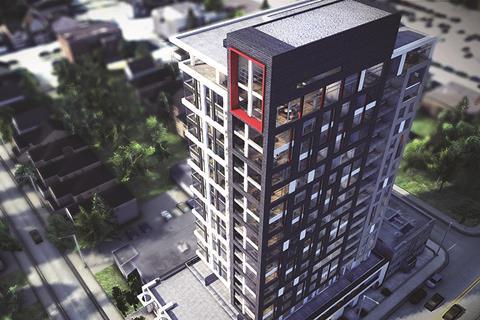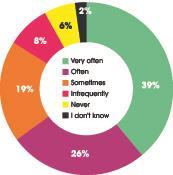Architects expect the influence technology has on the design process to rapidly increase over the next decade, according to a survey by software company Unity. Already some firms are seeing the benefits of 3D visualisation software that originated in the gaming industry

Using ground-breaking technology will aid both your creativity and profitability, an audience of architects and design specialists heard last month.
At an event organised by software company Unity, the 100-strong audience were presented with results from a survey on global technology trends in architecture as well as seeing evidence of how software such as 3D visualisation is being used and influencing the work of leading practices such as Zaha Hadid Architects and Gensler.
The survey, commissioned by Unity, was taken by 967 architects and technology specialists from 95 countries and shows both high levels of confidence on future economic prospects in the sector as well as how influential and core technology will become over the next decade in the architectural sector.

Speaking at the event, held in LondonŌĆÖs Westminster, Antony Douglas vice-president for Europe Middle East and Africa at Unity, said there had been an increasing interest from non-gaming industries in their platform and they were taking a ŌĆ£long viewŌĆØ on developing the software specifically for architecture.
UnityŌĆÖs software is used by an increasing number of game developers - last year games developed on the platform generated ┬Ż1bn in revenue. UnityŌĆÖs 3D visualisation software originated in gaming but is also employed by leading brands such as Lego and NASA as well as a growing user base among architects.
The audience saw direct architectural case studies from Zaha Hadid Architects and Gensler. ZahaŌĆÖs associate Helmut Kinzer said that the firm had been using UnityŌĆÖs platform for three years and it was already affecting and improving the companyŌĆÖs workflow on design projects. This had particularly helped save time and costs on a residential project the firm was working on in Russia, where the interior aesthetic had to closely match the external design.
Kinzer said technologies such as UnityŌĆÖs would lead to ŌĆ£enormous changeŌĆØ in the design process. ŌĆ£It will revolutionise the way we view space,ŌĆØ he said.
ŌĆ£The technology offers a new paradigm in terms of visual perspective.ŌĆØ

Ruben Derrick, a senior visualizer at Gensler, showcased a variety of projects designed using the Unity platform including a new Microsoft store in Los Angeles. The technology allowed them to specify and display exactly where Microsoft products were placed in the store and significantly increased client engagement in the design process, Derrick said.
Highlight findings from the Unity-commissioned survey include:
- Real-time rendering will be the most influential technology for architecture and visualisation in the next decade, according to 75% of those surveyed
- Client demand will be the main driver of the future growth of visualisation - 74% of respondents believe they will be developing or sourcing a real time interactive model for their clients in the future
- Two thirds of those surveyed saw revenue growth in the past year and 75% of respondents expected their revenues to grow in 2014-2015.
Highlights from the 2014 Unity Survey
74% believe they will be developing or sourcing a real time interactive model due to client demand in future

During the pitch/bid process how often do you rely on technology to communicate your ideas? (e.g. rendering engines, real-time, mobile apps, VR etc)
For more detailed results of the survey, go to: try.unity3d.com/report/ or email: mo@unity3d.com



























No comments yet